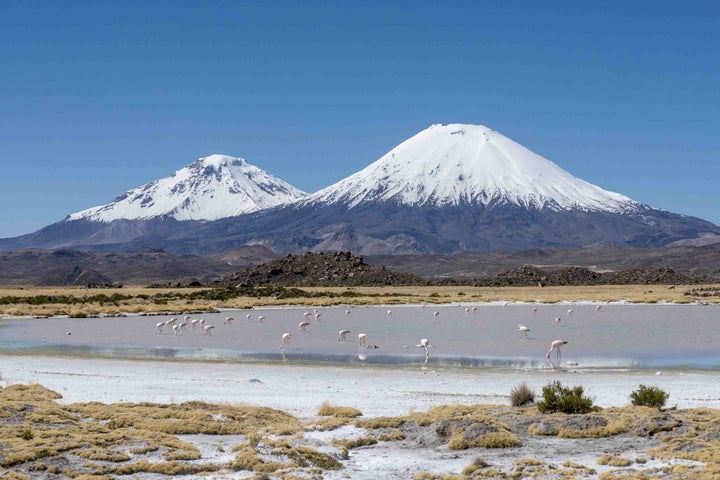
Scientists have discovered the sunniest place on Earth, but it’s probably not where you’d expect it to be.
Enter: the Altiplano of the Atacama Desert, near the Andes Mountains of Chile.
This plateaued area in west-central South America stretches across Peru and Bolivia too, but this latest research focused on findings from Chile.
OK, it may be around 4,000 metres above sea level, but scientists have just confirmed that it receives the most sunlight in the world, despite not being the Earth’s tallest destination or on the equator.
In fact, this location experience the same amount of sunlight as Venus – you know, that planet which is around 54 million km (or 28%) closer to the sun than Earth. So, quite a lot of sunshine then.
A study published in the Bulletin of the American Meteorological Society this week came to this conclusion by measuring how much light energy the Altiplano received from the sun.
The researchers found the plateau received 2,177 watts per square metre, compared to 1,360 watts per square metre found in the highest point of our atmosphere.
Study author Raul Cordero, a climatologist at the Netherlands’ University of Groningen, said: “It’s actually the radiation that you will be receiving in summer if you are standing on Venus.”
Perhaps we shouldn’t be surprised – after all, the name Altiplano means “lift off place” and the plateau is known for hosting astronomical projects.
But the researchers also found much of the extra radiation this area receives may be down to the thin, high-altitude clouds around it, which focus the sun on the surface through “forward scattering”.
Normally, cloud’s water vapour can help reduce irradiance, but the Altiplano is too high and the clouds are too thin – so it has the opposite effect.
Think of this as a magnifying effect, which is particularly strong in January and February – the hottest months of the year for the southern hemisphere.
Summer in the southern hemisphere is already more intense compared to summer in the northern hemisphere, because the Earth is that much closer to the sun below the equator – sunlight levels are 7% higher as a result.
The southern hemisphere has fewer ozone molecules to protect it.
The Altiplano is close to the Tropic of Capricorn, and as the study explained, “is characterised by its high elevation, prevalent cloudless conditions, and relatively low concentrations of ozone, aerosols, and precipitable water”.
Cordero explained to the Washington Post the solar energy potential in the area is around twice the highs seen in Central Europe and the US East Coast – which can of course be a health risk when it comes to skin damage.
The sunniest places don’t necessarily mean they’re the hottest places, according to the scientists, with Bahrain, Qatar, Saudi Arabia and Pakistan all competing for extreme highs, according to another study.
Meanwhile, Altiplano stays cool because of its reasonably high elevation, and the nearby Pacific Ocean – which has water currents coming in from Antarctica – help cool the area.